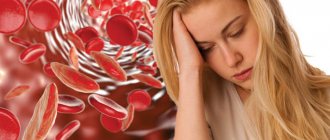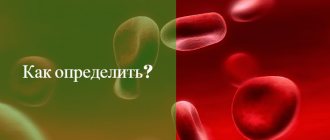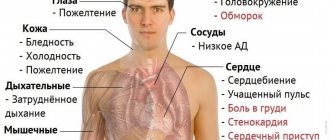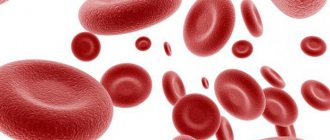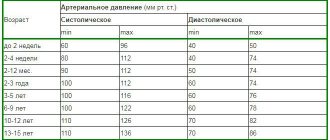Treatment of anemia with traditional medicine
First of all, it is necessary to find out the cause of the disease and act on it. If the cause of anemia is poor nutrition, then the patient’s diet is normalized; if the disease occurs as a complication of helminthiasis, then measures are taken to rid the patient of worms; if anemia is a consequence of bleeding, then the bleeding vessel is ligated, and so on.
In addition, the mechanism of development of the disease is influenced (for example, vitamin B12 or iron supplements are prescribed if they are deficient).
Another method of treating anemia is to quickly replenish the number of red blood cells in the patient’s body through red blood cell transfusion. This manipulation is carried out as a last resort, if indicated, when there is a threat to the patient’s life.
The patient's life may be threatened by the following body conditions:
- severe anemia when hemoglobin falls below 70 g/l;
- anemic coma is a condition in which the patient loses consciousness and stops responding to external stimuli; an anemic coma occurs due to insufficient oxygen supply to the brain due to a sharp decrease in the level of red blood cells.
Diagnostic methods
The only way to detect anemia is to undergo special tests - biochemical and clinical blood tests. In accordance with the results of these tests, the doctor will prescribe an individual course of treatment for you, according to which you should shape your lifestyle.
The following symptoms may be a reason to consult a doctor:
- Lethargy
- Fatigue for no apparent reason
- Reduced body temperature
- Fainting, pre-syncope
In case of depressive conditions, it would also be useful to contact a therapist who will prescribe an appropriate examination. About half of cases of depression develop due to medical problems associated with iron deficiency anemia.
If you decide to do without consulting a doctor and begin to act according to “traditional” methods of treating anemia, the consequences may be very unpredictable. At best, you can get away with a simple allergic reaction to one or another ingredient of one of the “folk remedies.” Therefore, we strongly recommend that if the above-mentioned symptoms occur, you first consult a doctor and undergo all the necessary tests.
When iron deficiency anemia is detected and a course of treatment is prescribed, tests will have to be taken every 2-3 months (depending on the individual characteristics of the body) in order to track the dynamics of the symptoms of the disease.
Symptoms of anemia
The severity of the clinical picture and the presence of individual symptoms depend on the form of anemia. Common signs of the disease include:
- increased fatigue;
- tremor of the limbs;
- causeless weakness;
- constant dizziness.
With moderate and severe anemia, fainting conditions may develop . You can usually tell if a person is anemic by their appearance. The skin of such a patient is pale, sometimes bluish, dry, and the mucous membranes are of an unnaturally pale color.
Even slight physical exertion causes the patient to experience tachycardia and shortness of breath .
If left untreated, the patient's general condition worsens, which can lead to the development of a number of serious complications (for example, coronary heart disease).
Causes of iron deficiency:
1.Increased need of the body for iron during pregnancy
During pregnancy, a woman’s body spends more than 1000 mg of iron. A woman’s need for iron during pregnancy can reach 15-18 mg/day, while outside of pregnancy the daily need is about 2 mg. This leads to a decrease in stored iron in all women by the end of pregnancy. It takes at least 2-3 years to restore iron reserves consumed during pregnancy, childbirth and breastfeeding.
2. Nutritional iron deficiency.
This type of iron deficiency occurs when there is insufficient supply of iron from food: vegetarianism, a passion for diets low in animal proteins. During pregnancy, a vegetarian diet is unacceptable.
- 3. Presence of a pathological background for the development of anemia
- use of intrauterine contraceptives (they increase menstrual blood loss);
- endometriosis
- uterine fibroids
- abnormal uterine bleeding;
- gynecological diseases accompanied by bleeding;
- heavy and prolonged menstruation;
- hypothyroidism and thyroid dysfunction;
- diseases of the gastrointestinal tract (peptic ulcer of the stomach and duodenum, erosive gastritis, nonspecific ulcerative colitis, etc.);
- diseases of the kidneys and urinary tract (chronic pyelonephritis, glomerulonephritis, etc.);
- multiple pregnancies and births (more than three) with an interval between births of less than two years;
- multiple births;
- pregnancy occurring during lactation;
- frequent abortions and spontaneous termination of pregnancy preceding this pregnancy;
- foci of chronic infection.
Features of the course of pregnancy in the early stages
- vomiting of pregnancy;
- bleeding.
- 5. Puberty and growth
- 6. Iron resorption deficiency
This type of anemia is caused by a decrease in the absorption zone of iron during gastritis, duodenitis, enteritis, resection of the stomach and large areas of the small intestine.
What to include in your diet
Here are the best foods to add to your diet to overcome anemia.
- Beef liver. Rich in iron, vitamin B12 and many other important substances. If you don't like liver, eat quality beef. Preferably organic.
- Foods high in vitamin C. It helps in the absorption of iron. “If you eat foods high in iron (like beef), try to include a source of vitamin C in the same meal, such as tomatoes, peppers,” advises Rachel Lin. “Strawberries are great as a dessert.”
- Green leafy vegetables. Contain a significant amount of iron and folic acid, for example, spinach, broccoli. Raw spinach contains a lot of oxalic acid, which interferes with the absorption of iron. To reduce its content, spinach should be subjected to gentle heat treatment, for example, blanching.
- Products with probiotics. There are a lot of them in natural yogurt, kefir (especially from goat’s milk), and sauerkraut.


